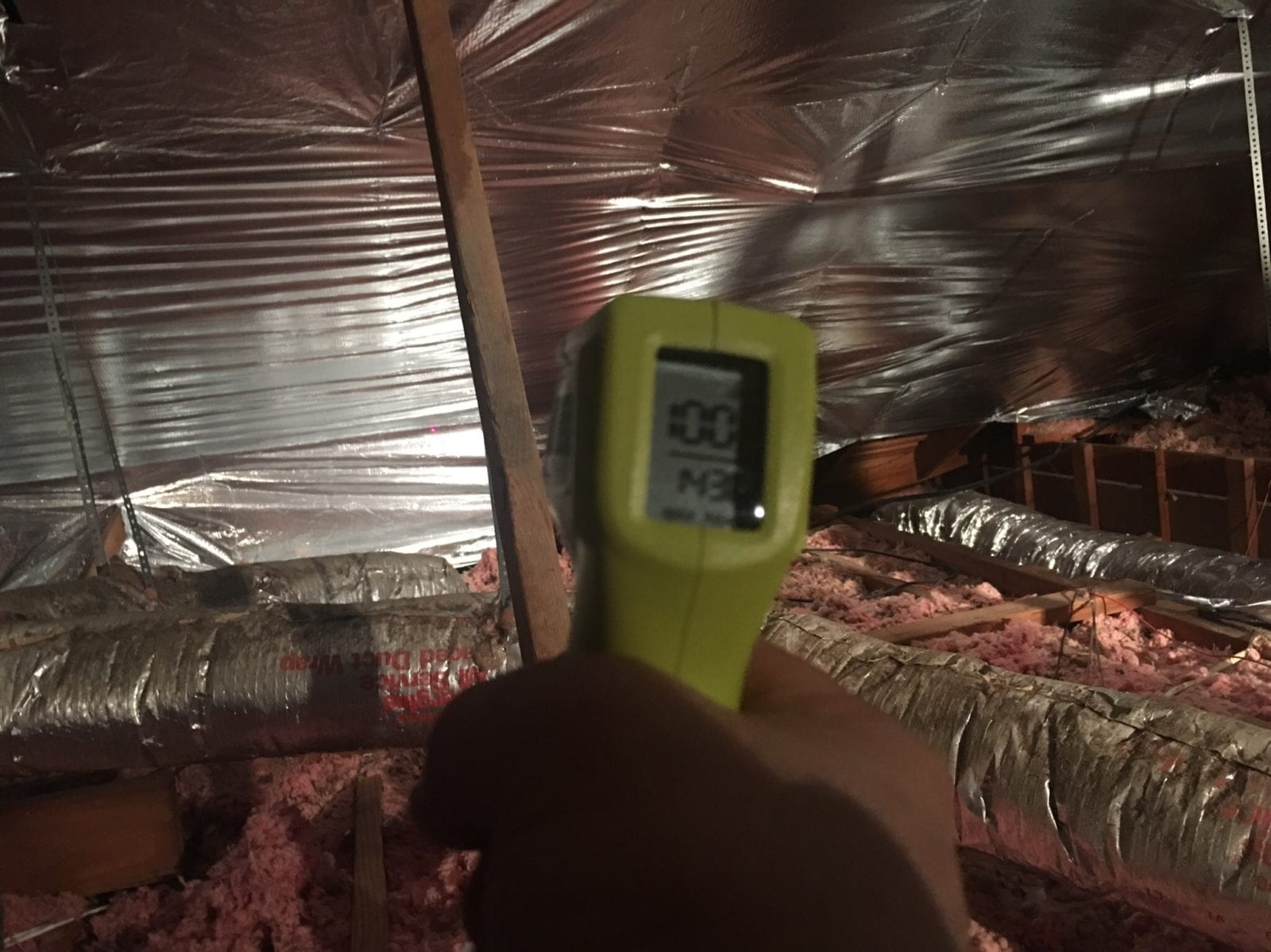Dallas: (972) 548-0088
What is Radiant Barrier?

Estimated reading time: 3 minutes
You may wonder what a radiant barrier is and how it can benefit your attic. This article will share what a radiant barrier is, how it is installed, and why it is so important in Texas.
Table of contents
Radiant barrier is a product we use to reduce heat flow. There are several different types of radiant barriers:
- The spray-on or paint-on type comes in a can.
- The decking type. A lot of new homes are coming with decking. You can also get a decking barrier when you replace your roof. You can also get TechShield, which adds a laminated foil to the decking.
- Then there’s the foil itself. This is what we’ve permanently installed because it works the best.
How We Install It
We use a foil, copper film, or sheet that’s pulled up to the rafter underneath the roof. This is more effective than the other two types of barriers because it has some space to breathe.
Our radiant barrier is stapled up with air compressors and staple guns, with the correct air pressure and the right staple length. It’s stapled below the rafter so you can separate the material and the roof deck. When you have that separation, there’s no risk of increasing roof temperature, voiding shingle warranty, mold or mildew, or any of the many other things that can happen when you put something up against the roof.
Why You Need Radiant Barrier in Texas
Any radiant barrier is a heat reducer. You’ve got heat coming through the roof all day, making your attic heat up all day. It’s the same idea as putting the fold-out visor on your car’s windshield: You put it up when you get out of your car and go into a store. When you come back, your car is still hot, but it’s not as hot as it would have been without that protection. The car cools down a little quicker when the A/C kicks on, and you get down the road a little more comfortable more quickly.
Attic temperature is essential because typically, here in Texas (or anywhere in North America), your air conditioning equipment and your ductwork are in the attic. When your attic is at 150 degrees, you’re counting on a mechanical system to produce cold air to your house in that environment. Radiant barrier at the source, the roofline—not at the floor—can reflect that heat and slow down that heat transfer, and slow down that process where the attic is getting so hot and cooking your system.
Results To Expect
Typically we see 20-40 degrees of temperature reduction with our barriers. If it’s 100 degrees outside, and you’ve got a radiant foil barrier with that separation, you can get 30-40 degrees of relief in your attic. We’ve seen this, summer after summer! And if it’s 80 or 90 outside, our barriers can close your attic to outside temperatures.
Please give us a call if you have any questions about radiant barriers. We’d love to talk with you!
